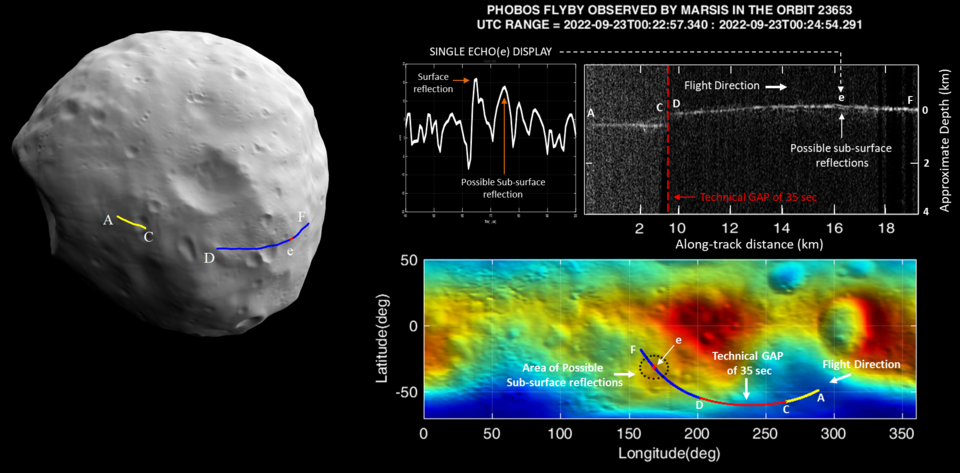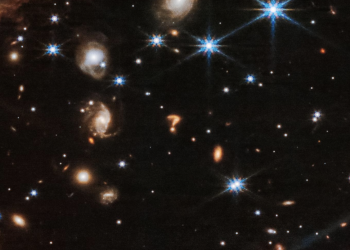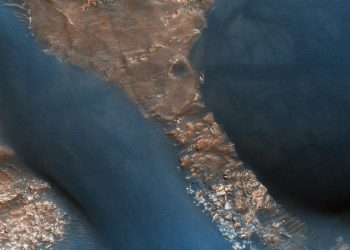Mars, the red planet, the reddish star in Earth’s night sky, is full of surprises. The more we explore it, the more we are left awestruck by how similar the fourth planet from the sun was similar to Earth in the very distant past. But not only is Mars interesting and full of surprises, but its small moons are also too. Now, scientists have discovered that one of the Martian moons, Phobos, contains what seem to be subterranean structures hidden inside the moon. Their origin remains a mystery, and scientists are eager to learn more about what they just found. Curiously, in the past, it had been proposed that this mysterious Martian moon was created by an ancient civilization that inhabited Mars. Strangely, Phobos is also home to the mysterious standing monolith.
Strange Characteristics
The American astronomer Bevan Sharpless first observed an acceleration of Phobos in 1945. It was difficult to explain the acceleration as a result of a disturbance within the thin Martian atmosphere. It wasn’t until the Soviet astrophysicist Iósif Shklovsky collected the information that it got attention when he suggested in 1959 that the satellite might be hollow and speculated it might have been a satellite launched by an alien civilization that was once present on Mars. Some notoriety was gained from the artificial Martian moon hypothesis. A book co-written by Shklovsky and Carl Sagan, Intelligent Life in the Universe, revived it in 1966. Sharpless’ initial measurement was confirmed by new astronomical observations that accompanied the controversy. The moon has been analyzed and photographed several times since then by different probes sent into Mars’ orbit.

Mysterious Martian moons
In 2003, the European Space Agency (ESA) launched its Mars Express mission. It recently received a new update for its Mars Advanced Radar for Subsurface and Ionosphere Sounding (MARSIS) instrument that enabled it to explore Phobos. MARSIS team member Andrea Cicchetti recently stated, “We are still in the early stages of our analysis.” However, there are signs of previously unknown features below the surface. MARSIS may be able to help solve the mystery surrounding the origin of Phobos.” Mars has two moons, Phobos and Deimos, which are ominously named after Greek gods. Note that neither is particularly similar to a “normal” moon. Both are small, like lumpy asteroids rather than spherical moons like that of the Earth. Phobos is less than 17 miles in diameter. For a long time, astronomers have been divided over their origins due to these strange but fascinating features.
Captured Asteroids?
Mars Express scientist Colin Wilson says it is still unclear if the two small moons of Mars are captured asteroids or made from material that was ripped off Mars during a collision with asteroids. “While their appearance suggests they were asteroids, their orbit around Mars argues otherwise.” MARSIS can help with that. MARSIS fires low-frequency radio waves that penetrate deep into Phobos’ core with an antenna over 130 feet long. While most waves don’t penetrate the surface of the minimoon, those that do bounce off internal structures and boundaries between materials. Using radargrams, scientists can gain a better understanding of Phobos’s subsurface structures and composition.
The radargram shows bright lines that indicate surface reflections, but scientists say there are indications of weaker “bottom reflections” that likely indicate underground structures. With the Martian Moon Exploration (MMX) mission, scheduled for launch in 2024, ESA will work with the Japanese Space Agency to collect samples from Phobos’ surface.
Have something to add? Visit Curiosmos on Facebook. Join the discussion in our mobile Telegram group.











